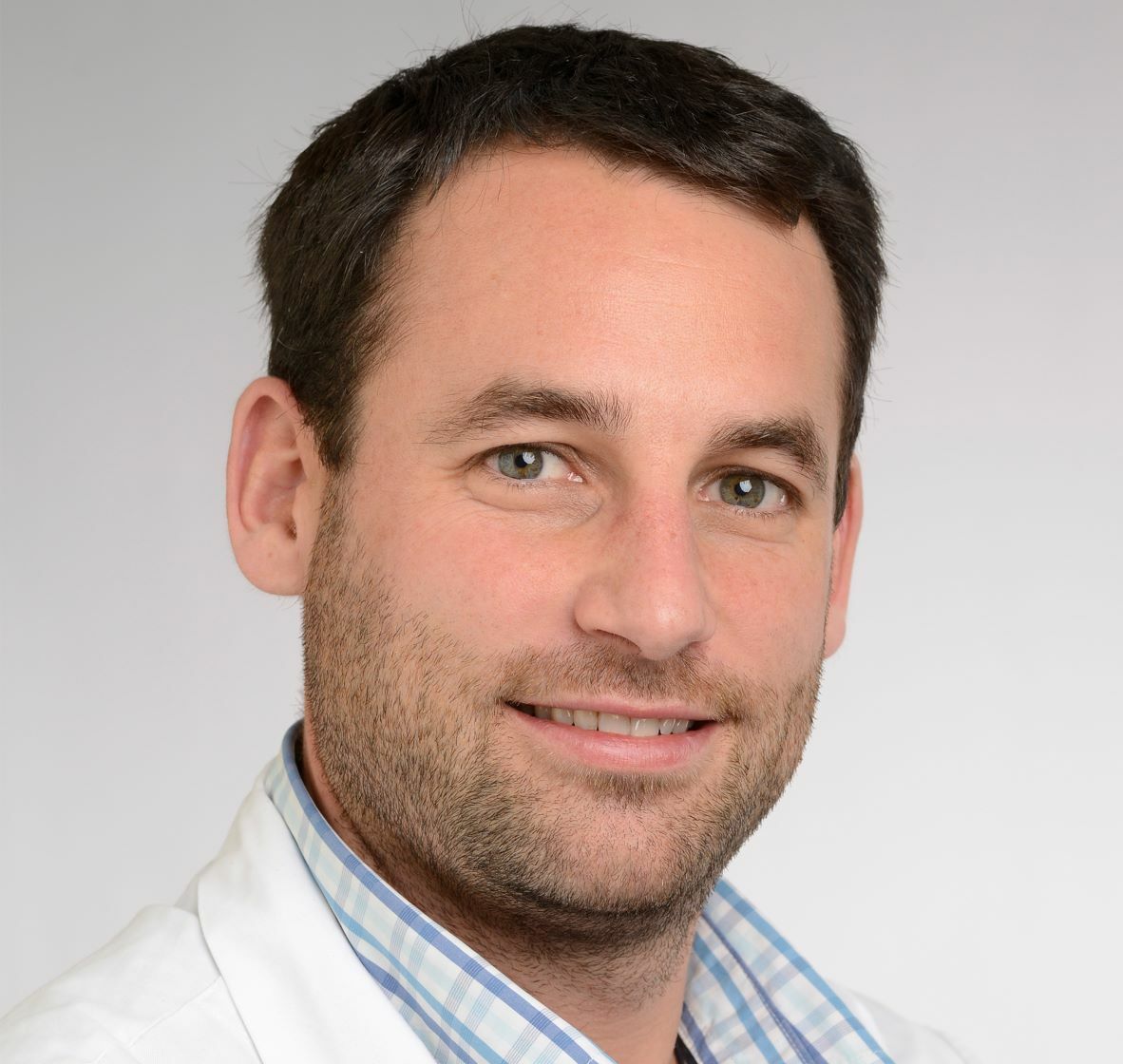"Thanks to CAR T cell therapy, we are now able to treat children who previously had no treatment option left open to them"
Francesco Ceppi, MD

Francesco Ceppi, MD, is a paediatric oncologist in the Paediatric Oncology/Haematology Clinic at Lausanne University Hospital (CHUV). His area of expertise is immunotherapies, which are already being used successfully in adult cancer patients. Paediatric oncology also has high hopes for these innovative treatment methods. Initial results from clinical trials are extremely promising, but more intensive research is needed.
Dr. Ceppi, immunotherapies are seen as the great hope in the fight against cancer. What is it exactly that makes these methods of treatment so successful?
Immunotherapies have revolutionised the treatment of cancer over the last 15 to 20 years. Thanks to cutting-edge research, we now know how to use a person’s own immune system to fight a tumour. The procedures and drugs used in immunotherapy ideally enable the body’s own immune cells to recognise the cancer cells, attack and destroy them. Because immunotherapies are more targeted than conventional chemotherapy, they are more effective and at the same time have fewer short- and long-term toxic side effects. It is important to know that these toxic side effects impair the development of children and can even lead to death in adults who have secondary disorders. Currently, the most promising approaches include antibody therapies, CAR T cell therapies and tumour vaccines, to name but a few. However, immunotherapies do not work for every type of cancer and for every patient. That is why it is important to continue research in this area.
What are the advantages of immunotherapies, especially for young patients who, once cured, often have to deal with long-term, sometimes serious, consequences?
Today, four out of five children and adolescents with cancer can be successfully treated and cured. But the aggressive therapies that are necessary for this can sometimes massively impair their growth and development. That means that around 80 per cent of former childhood cancer patients (survivors) suffer from moderate to severe late effects. Thanks to clinical trials, it has been possible, for example, to steadily improve the cure rate for paediatric leukaemia since the 1960s, so that today it is around 90 per cent. That is incredible. But the conventional drugs used for treatment can have considerable side effects on the survivors’ physical, social and emotional well-being. For this reason, paediatric oncology has increased its efforts in recent years to reduce the toxicity of treatments and thus improve the quality of life of those affected. Innovative therapeutic approaches, such as monoclonal antibodies or CAR T cells, are promising options. In the initial treatment of childhood leukaemia, they could replace a large proportion of intensive chemotherapy and, in particularly severe cases, a bone marrow transplant, thus considerably reducing the long-term consequences.
For some children suffering from particularly aggressive forms of leukaemia, CAR T cell therapy is often the last hope. How does this innovative treatment work?
CAR T cell therapy is an immunotherapy in which, to put it simply, human immune cells are genetically modified in such a way that they specifically recognise and fight cancer cells. It involves taking immune cells (T lymphocytes) from the body, preparing them in the laboratory and multiplying them in order to then inject them back into the patient. In children with acute lymphoblastic leukaemia (ALL), where standard treatment strategies fail or the cancer returns, cure rates are extremely impressive, as early clinical trials from the USA have shown. In Switzerland, treatment with CAR T cells has so far been limited to certain patient groups. These include young ALL patients who have suffered a relapse after a bone marrow transplant or who do not respond to conventional therapies. Thanks to CAR T cell therapy, we are now able to treat children who previously had no treatment option left open to them. Nevertheless, we need to continue research in this area because, unfortunately, the cure is often not permanent and fifty per cent of all patients relapse. This is why we are working with other research groups in international clinical trials to improve this technology.
Where do you currently see the greatest challenges for childhood cancer research and what motivates you personally in your work?
The results we are seeing with both immunotherapies and targeted therapies are very promising. The major challenge is to constantly integrate these new treatment approaches at an ever earlier stage in order to replace classical chemotherapy entirely or at least in part. This is the only way we can succeed in reducing the short- and long-term side effects and improve the quality of life of our young patients during and after cancer therapy. For me personally, it is important to find answers for example to the question of why certain subgroups of leukaemias are resistant to standard treatments. And I want to help develop therapies that have as few side effects as possible for our young patients. Our goal has got to be that we can make it possible for a child in therapy to lead as ‘normal’ a life as possible. The development of such new and more effective immunotherapies might also offer a solution for children in developing countries where aggressive chemotherapies and bone marrow transplants cannot be used because of the side effects.